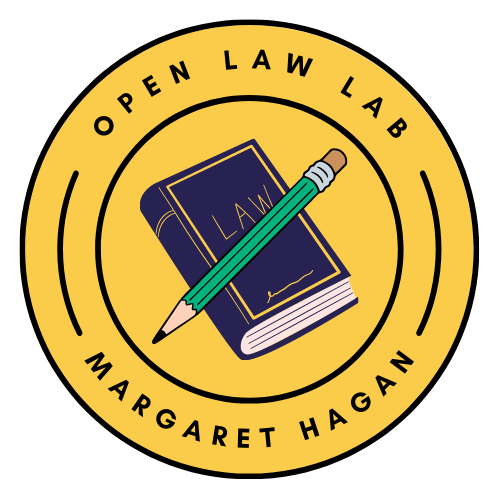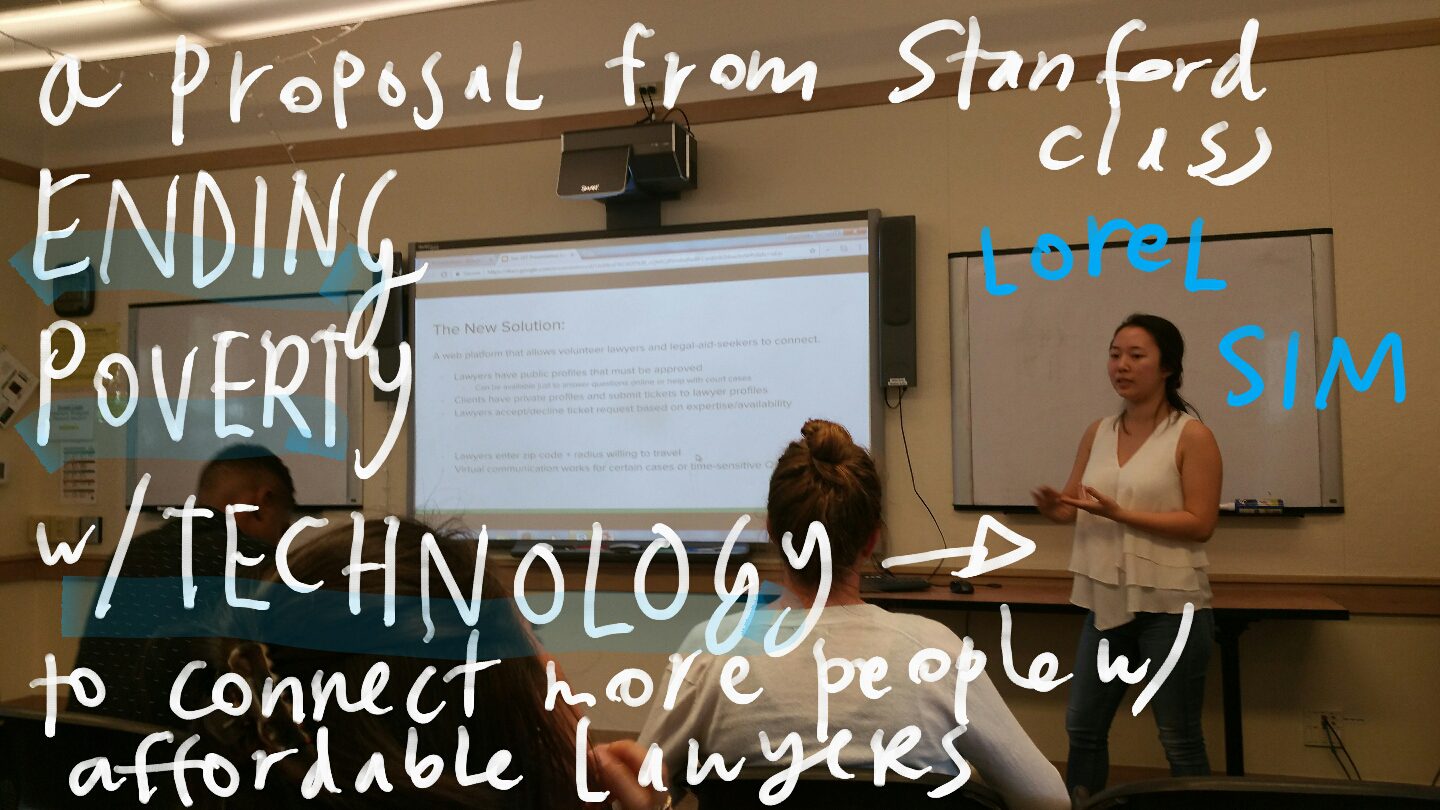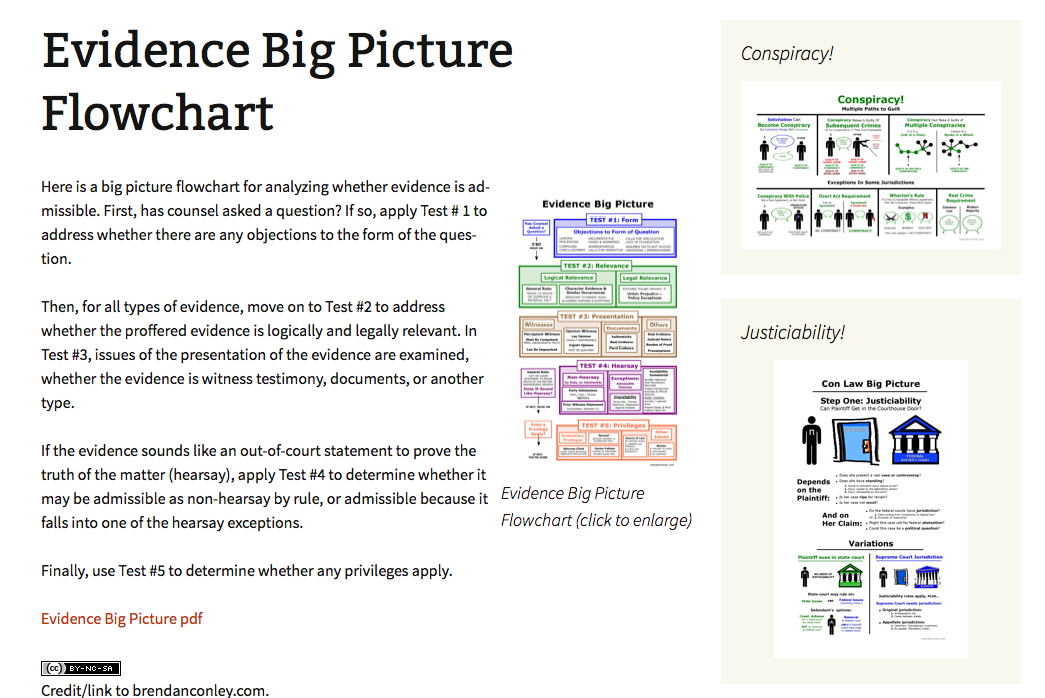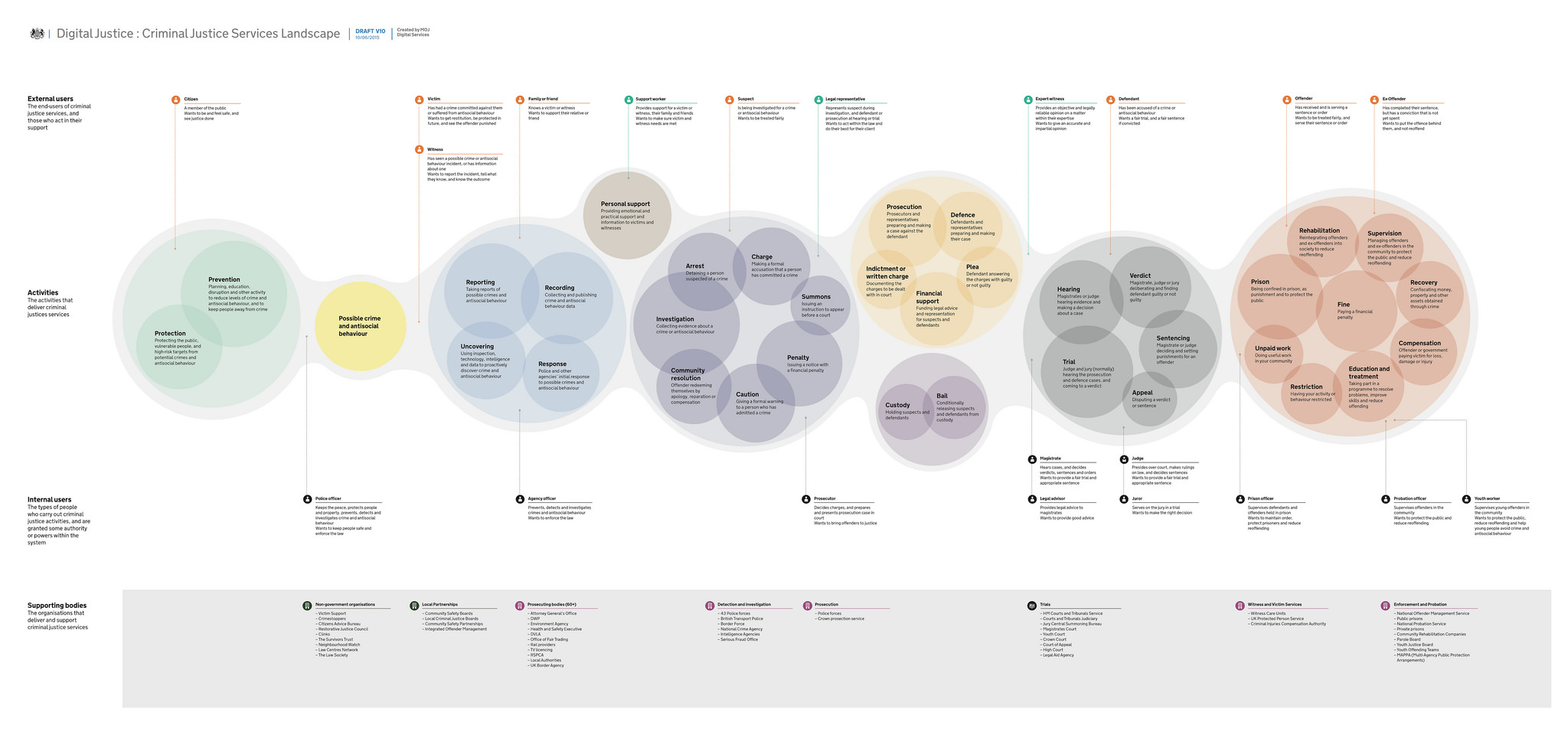This afternoon I was privileged to attend the final presentations in the new Stanford class Ending Poverty with Technology. This class is taught by Sociology professor David Grusky, in conjunction with the Stanford Center on Poverty & Inequality, of which he is a co-director.
I came to hear and review these presentations because one of the 10 proposed new interventions was a legal services oriented idea, on how to connect more people with free or low cost lawyers online.

Undergrad students had spent the quarter talking with experts, researchers, and policymakers about the growing issues around poverty, jobs lost to automation, government systems that are difficult to navigate and not necessarily effective, and other dynamics that reinforce inequality in the U.S.
Each of the student teams proposed a technology-based tool to address either systemic issues or specific “felt-problems” of people in poverty. The proposals included those on how to harness virtual reality for equal access to quality education; pooling business resources to form worker cooperatives; creating free child care networks; and automating or crowdtraining new workforce skills.

I was very happy that at least one of the solutions focused on access to lawyers as a potential solution to systemic poverty. This links back to a holistic view of social services, with legal help as a key stream of help to resolve issues of employment, housing, family and debt.
Next quarter, the students will be moving from initial ideas to then bringing in stakeholders, crafting prototypes, and making the ideas into pilot-able implementations.



